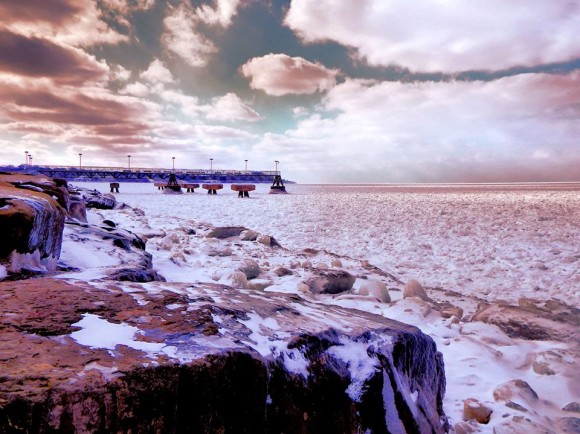


Ice cover on North America’s Great Lakes reached 88 percent in mid-February 2014, levels not observed since 1994. The average maximum ice extent since 1973 is just over 50 percent. It has surpassed 80 percent just five times in four decades.
Nathan Kurtz, cryospheric scientist NASA’s Goddard Space Flight Center, said:
Persistently low temperatures across the Great Lakes region are responsible for the increased areal coverage of the ice.
Cold air and winds remove heat from the fresh water until it reaches the freezing point, at which point ice begins to form on the surface. Kurtz added:
Low temperatures are the dominant mechanism for thickening the ice, but secondary factors like clouds, snow, and wind also play a role.
Scientists say that there was an early ice season this year, owing to cold temperatures in the fall and early winter. Ice was reported on bays and harbors of the Great Lakes as early as the end of November, as opposed to the normal timing of mid-December.
Bottom line: Ice cover on North America’s Great Lakes reached 88 percent in mid-February 2014, levels not observed since 1994.











